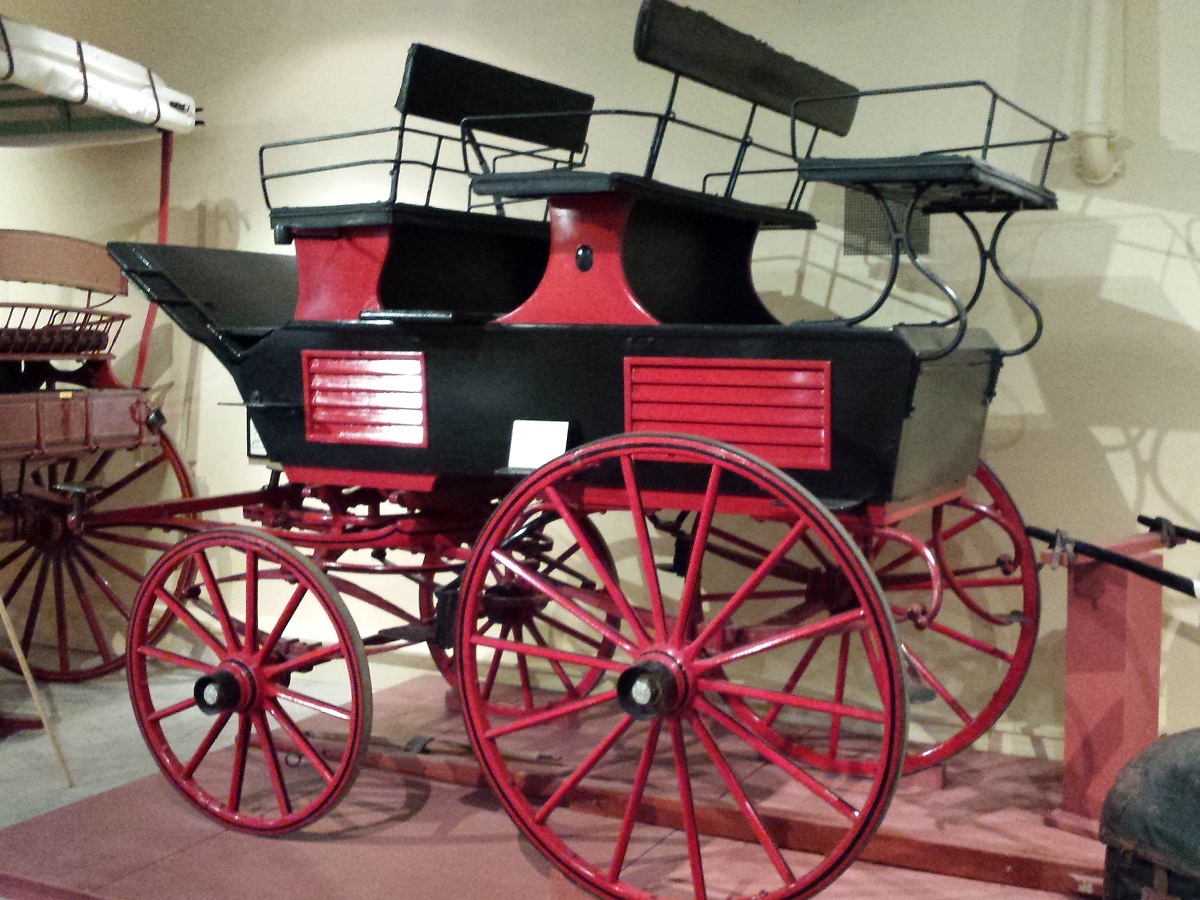Gray Line Break

This vehicle, which is a "break", not a "coach", is purported to have carried passengers between Boston and Manchester. It could seat nine and carry freight as well, and its sturdy leaf springs reportedly ensured a "comfortable" ride. For many years, it sat in a Wilmot barn before the Society learned of it in 1970. Through the generosity of Mr. and Mrs. Walter Ensign, this distinctive roof-seat break was purchased and given to the Society. In 2003, the vehicle was professionally restored to its striking black and red color scheme.
A roof-seat break is typically a sporting vehicle, not a commercial vehicle, and came into being when the sport of four-in-hand driving became popular on summer estates. Traditionally, breaks were used for breaking horses and exercising them. They were large vehicles, usually found in well-established coach houses, at livery stables and horse exchanges. At first, the Body Break, or Wagonette Break, was the popular model. A second seat was placed on a platform behind the driver's seat, making it a Built-Up Break. It was but a step to extending the platform and adding more seats, creating the Roof-seat Break.
The tall appearance of the vehicle and the relatively small front wheels allows a "cut under" arrangement where the front wheels can be turned a full ninety degrees in either direction, permitting a very tight turn radius. (Contrast this with the Concord Coach and the Mountain Wagon, which each have a rather wide turn radius.)
..